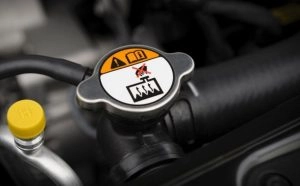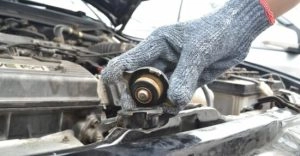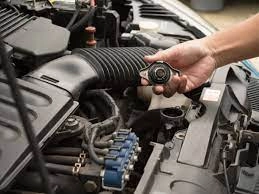The radiator cap is an important part of the car's cooling system, as it protects the engine from leaks and loss of coolant. If damage occurs to the cap, it could lead to serious engine problems.
But, over time and with continuous use, the cover may be subject to damage and corrosion, leading to some issues and signs that require attention to maintain the safety of the engine and the quality of the car's performance.
If the signs of cover damage are not recognized in time, it can lead to costly repairs. In this article, we will discuss the most prominent signs that indicate the radiator cover damage.

What is the radiator cap?
It is a part of the cooling system in your car, located at the top of the radiator. It contains a vent valve and a pressure valve composed of a spring-loaded disc to protect the radiator from leaks and damage, and helps improve the performance of the radiator.
What is the function of the radiator cap?
The cover plays an important role in the cooling system of your car, and here are some of the reasons why it is important:
Radiator Protection
The radiator cap protects against leaks and damage. If the cap is tightly sealed, it will guard the radiator against excessive pressure and leaks. However, if it is not tightly sealed, it could lead to coolant leakage.
Improve system pressure
The cap works as a tight seal to help maintain your car's cooling system at the required pressure. Proper pressure contributes to raising the boiling point.Coolant FluidThis allows it to reduce more heat and protect your car's engine when operating at high temperatures, which increases engine efficiency and improves fuel consumption.
However, if the cover gets damaged, it will cause a pressure malfunction, which will lead to damage to your cooling system components and cause leaks.
How do I know if the radiator cap is damaged?
Your radiator cap is a small part that plays a big role in protecting your car's engine from overheating. There are many warning signs that your cap is not working properly:
Radiator water leak
If there is a radiator water leak, it could mean that your radiator cap is damaged. Corrosion or damage to the cap can lead to increased pressure within the system, causing water to leak from weak points in the system.
If you notice any sign indicating a coolant leak nearThe RadiatorOr its cover, it is necessary to check the radiator cap first to see if it is damaged. If so, replace the cap immediately.
The engine's temperature is increasing.
If you notice that the temperature of your car's engine is high, it could be due to a damaged radiator cap. Excessive pressure in the cooling system due to a faulty cap can impede the proper flow of water to the engine, consequently increasing its temperature.
If you notice that your car's engine is starting to steam up intensely, do not look under the hood unless you have turned off the car and let the engine cool down for some time before lifting the hood. In this way, the engine can remain cool while being checked.

The presence of air in the cooling system.
When the cap is not properly sealed, air can enter the cooling system, leading to the formation of air bubbles in the thermostat core and radiator hoses. As a result, the engine temperature will start to rise excessively, as the engine cannot maintain a consistent temperature.
The radiator tank is full.
If you have a damaged cap, the pressure will increase, thus causing the coolant to be released quickly and in large quantities into the radiator reservoir, leading to its overflow.
Cracking, bulging, or shrinking of the radiator hoses.
The cracking and swelling of radiator hoses are among the common causes of radiator cap damage. This can occur due to high heat and continuous exposure to the coolant.
This problem typically appears as small cracks in the sides of the radiator hoses, and these cracks can increase over time, leading to water leakage from the radiator.
High water pressure inside the radiator can lead to bloating of the hoses, which can cause damage to the outer casing of the radiator.
This issue usually indicates the need to replace the radiator hoses with new ones.

When should the radiator cap be changed?
If you see rust inside the cover, or if you have any other reason to doubt its condition, replace it. It's an inexpensive and extremely important part for the health ofYour car's engineThere is no reason for you not to replace it with a new one.
If you find oil, foam, or anything else other than the color of the coolant on the radiator cap, you should go to your mechanic, as this could be a sign of oil mixing with the coolant, which may mean that you have a damaged head gasket or another engine problem, and you should address this immediately.

Comments